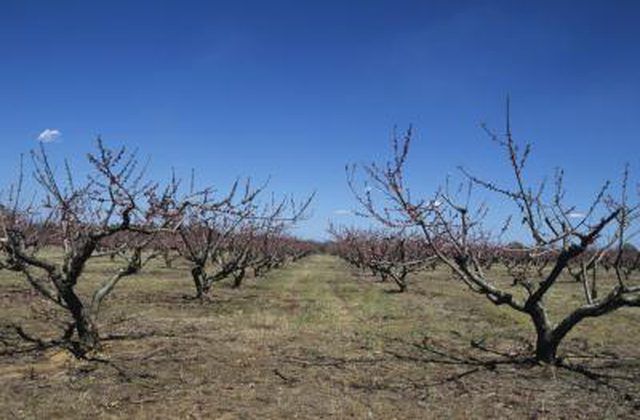Bulbs
Flower Basics
Flower Beds & Specialty Gardens
Flower Garden
Garden Furniture
Garden Gnomes
Garden Seeds
Garden Sheds
Garden Statues
Garden Tools & Supplies
Gardening Basics
Green & Organic
Groundcovers & Vines
Growing Annuals
Growing Basil
Growing Beans
Growing Berries
Growing Blueberries
Growing Cactus
Growing Corn
Growing Cotton
Growing Edibles
Growing Flowers
Growing Garlic
Growing Grapes
Growing Grass
Growing Herbs
Growing Jasmine
Growing Mint
Growing Mushrooms
Orchids
Growing Peanuts
Growing Perennials
Growing Plants
Growing Rosemary
Growing Roses
Growing Strawberries
Growing Sunflowers
Growing Thyme
Growing Tomatoes
Growing Tulips
Growing Vegetables
Herb Basics
Herb Garden
Indoor Growing
Landscaping Basics
Landscaping Patios
Landscaping Plants
Landscaping Shrubs
Landscaping Trees
Landscaping Walks & Pathways
Lawn Basics
Lawn Maintenance
Lawn Mowers
Lawn Ornaments
Lawn Planting
Lawn Tools
Outdoor Growing
Overall Landscape Planning
Pests, Weeds & Problems
Plant Basics
Rock Garden
Rose Garden
Shrubs
Soil
Specialty Gardens
Trees
Vegetable Garden
Yard Maintenance
How to Make Your Own Lime Sulfur for Spraying Fruit Trees
How to Make Your Own Lime Sulfur for Spraying Fruit Trees. Sulfur is the oldest known organic pesticide, used by the Greeks against wheat rusts. Sulfur cooked in water with lime or calcium hydroxide, lime sulfur is particularly useful as a dormant spray -- applied only to dormant woody shrubs or trees, not foliage. Chemical companies and...

Sulfur is the oldest known organic pesticide, used by the Greeks against wheat rusts. Sulfur cooked in water with lime or calcium hydroxide, lime sulfur is particularly useful as a dormant spray -- applied only to dormant woody shrubs or trees, not foliage. Chemical companies and agricultural extension services generally warn farmers and gardeners against making their own lime sulfur, because it is caustic and can burn. In recent memory, however, farmers always made their own, using formulas and procedures supplied by extension staff. This recipe makes lime sulfur in concentrated liquid form -- probably more than you need -- so collaborate with your neighbors.
Things You'll Need
Safety goggles or glasses
Heavy leather work gloves
Protective clothing and boots
Dust mask
6 to 8 concrete blocks
10- to 15-gallon steel drum or steel pan, with lid
Long, thick stick for stirring
Kindling
Good firewood
5 gallons plus 1 quart water
11 pounds sulfur powder
1.1 pounds lime
1.1 pounds wood ashes
5-gallon container
Funnel
Old pantyhose
Plastic PET bottles with lids
Knife
Find an outdoor area where it will be safe to build a smelly open-air cooking fire; lime sulfur smells like rotten eggs, which close neighbors may find objectionable. Place three blocks on each side of the fire area. Place the metal barrel or pan on top to make sure that the blocks will securely support it during cooking.
Set aside the barrel and build a hot fire with kindling and firewood. Your wood supply needs to keep the fire going for more than 1 hour. Place the barrel on the blocks and pour the water into the barrel. Put the lid on and bring the water to a boil.
Put on all safety gear. Mix the sulfur powder, lime and wood ashes in the 5-gallon container. Slowly pour the dry ingredients into the boiling water, mixing carefully. Keep the brew boiling for at least 1 hour after all ingredients have dissolved.
Check to see if the mixture is "cooked." The concentrate should be clear amber or red-brown, with yellow sediment and some yellow surface scum. Keep boiling if needed. When itís done, allow the concentrate to cool completely. Leave the lid on to keep dust, lint and insects out.
Filter the lime sulfur while decanting it into bottles. Cut a plastic bottle in half to use as a scoop. Put pantyhose over the small end of the funnel as a sieve, then place the funnel in the first bottle. Filter the liquid to eliminate impurities. Cap the bottle when itís full. Continue with the rest of the bottles.
Use lime sulfur spray for different purposes. For fruit trees and grapes, its primary use is as winter dormant spray to control leaf curl, mites, scale and rust. The usual rate of application is 50 milliliters per liter of water, or about 7 ounces per gallon.
Tips & Warnings
Always wear long sleeves and pants, protective boots, safety goggles and dust mask, to protect against lung damage and caustic burns.
Donít use sulfur spray within one month of using dormant oil spray or you may kill your trees. Also avoid using sulfur sprays if temperatures are above 80 degrees Fahrenheit.
Some plants donít tolerate sulfur sprays, including all cucurbits, currants, gooseberries, raspberries and apricot trees.